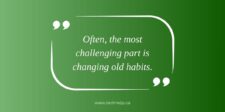Have you ever wondered how to make everyday tasks more fun and engaging? One way to do this is to gamify your life. Today, we will explore how to do it and accomplish more things.
What is Gamification?
Gamification integrates game-like elements into non-game activities to make them more engaging and motivating. It uses game design principles such as point scoring, competition, rules of play, and rewards to encourage participation and enhance user experience.
Think of it as transforming everyday tasks into a game. For example, you can set a goal to exercise every day for a week. Each time you complete your workout, you earn points.
Once you accumulate a certain number of points, you can reward yourself with a treat or a special privilege. This system makes the task more enjoyable and provides a visible way to track and celebrate your progress.
Key Elements of Gamification
Points and Scoring
Assigning points to specific actions or tasks is a foundational element of gamification. This system allows you to quantify your efforts and track your progress in real time. (Don’t worry—there are many mobile apps that simplify this.)
Points provide immediate feedback, letting you know how well you’re doing and what areas need more attention. For example, you earn points for completing a workout, a work project, or reading a book. Earning points can motivate you and help you stay on track with your goals.
Levels and Progression
You can advance through different levels as you accumulate points, symbolizing your growth and progress. Each new level represents a higher stage of achievement, encouraging you to continue striving for improvement.
Levels can also introduce new challenges and rewards, keeping the experience fresh and engaging. For instance, reaching a new level might unlock a new set of tasks or a special reward, motivating you to maintain your momentum.
Challenges and Competitions
Introducing challenges or friendly competitions can significantly boost engagement. Challenges can be personal goals you set for yourself or involve competing with others. This element adds excitement and a sense of urgency to your tasks.
Competing with friends, family, or colleagues can create a supportive environment, motivating everyone to perform their best. These challenges can range from fitness goals to productivity targets, making everyday tasks more enjoyable.
Rewards and Incentives
These play a crucial role in maintaining motivation. They can be physical, like a new gadget or a treat, or non-physical, like a day off or extra leisure time. Rewards recognize hard work and achievements, encouraging you to participate and strive for more. By setting up a system of rewards, you create a cycle of positive reinforcement that makes goal achievement more satisfying.
Feedback and Recognition
Providing feedback and recognizing achievements are essential for reinforcing positive behavior. Feedback helps you understand what you’re doing well and where to improve, guiding your efforts more effectively.
Recognition, whether self-acknowledgment or praise from others, fosters a sense of accomplishment and boosts your confidence. Celebrating small wins as you progress keeps you motivated and committed to your larger goals.
Why is Gamification Important?
Before we jump right into how to gamify your life, let’s consider why you would want to do it. Here are some key reasons why gamification can be helpful.
Better Engagement
Gamification makes activities more interactive and enjoyable, which can significantly increase user engagement. This is particularly beneficial in educational and workplace settings, where motivating learners or employees is crucial.
Improved Information Retention
Incorporating game elements presents information more memorably, helping users retain knowledge better. This is especially effective in educational environments where students can benefit from interactive learning methods.
Enhanced Collaboration
Gamification encourages social interaction and teamwork. Using points, leaderboards, and collaborative challenges fosters a sense of community and improves user collaborative skills.
Real-World Application
When you gamify your life, you’re bridging theoretical knowledge and practical application. People can better understand and apply what they have learned by simulating real-world scenarios through role-playing and interactive tasks.
Improved Performance
By making tasks more enjoyable and providing clear feedback through game mechanics, users are more likely to perform better. This is because they receive immediate feedback and can see their progress, which helps maintain a high level of performance.
Habit Formation
Turning tasks into games helps develop positive habits. The repetitive nature of gamified tasks, combined with the rewards system, reinforces good behavior and makes it easier to stick to routines. Over time, these habits can contribute to long-term success. This is probably the most important reason why you may want to gamify your life on this list.
Stress Reduction
Gamifying your life’s tasks can also reduce stress. By focusing on your activities’ fun and rewarding aspects, you can shift your mindset from seeing tasks as burdensome to viewing them as enjoyable challenges. This positive shift in perspective can lower stress levels and improve your overall well-being.
Increased Motivation
When tasks are gamified, they become more exciting and enjoyable. The anticipation of earning points, badges, or rewards can significantly boost your motivation to complete even the most mundane tasks. This heightened motivation can lead to greater consistency and dedication in your efforts.
Achievement and Recognition
Earning rewards and achieving milestones in a gamified system provides a sense of accomplishment. This recognition can boost your self-esteem and encourage you to strive for more. Whether earning a badge for completing a fitness challenge or receiving points for meeting a work deadline, the sense of achievement can be very motivating.
Competitive Spirit
Gamification draws out our natural desire for competition. Competing with yourself or others can push you to perform better and reach goals faster. Friendly competition can provide a collaborative and high-performing environment in a workplace setting.
So, How Do You Gamify Your Life?
Here’s a step-by-step process you can use to gamify your life.
1. Set Clear Goals and Milestones
First, define your objectives by breaking down long-term goals into smaller, achievable milestones. Then, visualize your journey by creating a progress tracker using apps or journals.
2. Reward Yourself
Design a reward system by deciding on incentives for completing tasks or reaching milestones, ranging from small treats to more significant rewards. Give yourself immediate, small rewards for completing daily tasks to keep motivation high.
3. Use Technology
Utilize gamification apps like Habitica, Todoist Karma, or Forest to turn your tasks into quests and earn points for completing them. Digital badges can also be earned for completing specific tasks or reaching certain goals.
4. Create Competition
Introduce friendly competition by challenging friends or family to complete similar tasks or goals. Use leaderboards to track progress and add a competitive edge to everyday activities.
5. Develop a Point System
Assign point values to tasks based on their difficulty or importance. Set point thresholds for different levels and aim to ‘level up’ by accumulating points.
6. Make it Social
Engage with online communities or groups that share similar goals or interests. Find an accountability partner and hold each other accountable.
7. Use Themes and Storylines
Develop a personal storyline where you are the hero on a quest. Assume different roles or characters for various aspects of your life to add an element of fun.
8. Stay Flexible
Be ready to adjust your point system and rewards as you go. What motivates you today might be less effective in a few months, so keep it dynamic.
9. Track and Reflect
Keep a daily log of your activities and progress. Regularly review progress and celebrate successes.
10. Incorporate Fun Challenges
Set up small challenges for yourself to add variety and excitement. Challenge yourself to complete tasks within a certain time to add urgency and excitement.
11. Mindset and Attitude
Maintain a positive attitude towards your tasks and goals. Focus on enjoying or experiencing the journey rather than just the end result.
You may also like: Mastering the 10 Fundamentals for Success
Life as a Game
Imagine your life as an epic video game. Each day is a new level, brimming with challenges and rewards. You start your day equipped with goals and tasks—your missions. Completing each mission earns you points, advancing you to higher levels of achievement.
Picture your to-do list as a quest log. Your workout is a boss battle, your work tasks are side quests, and your personal goals are hidden treasures. Each completed task gives you points, bringing you closer to leveling up.
Visualize a leaderboard tracking your progress. Each point you earn unlocks new abilities, rewards, and personal achievements—new skills, special treats, or significant milestones.
See yourself navigating each day with a sense of adventure and excitement. Harder tasks are challenging levels offering the greatest rewards. Your persistence leads to significant personal growth and life-changing rewards.
As you advance, collect badges and trophies—symbols of your achievements. These motivate you to keep pushing forward, striving for excellence in every aspect of your life.
Viewing life as a game makes every day an opportunity for growth, learning, and achievement. This playful mindset transforms mundane tasks into thrilling adventures, making your journey toward success and happiness more engaging and fulfilling.

We empower people to succeed through information and essential services. Do you need help with something? Contact Us.
Want a heads-up once a week whenever a new article drops?







